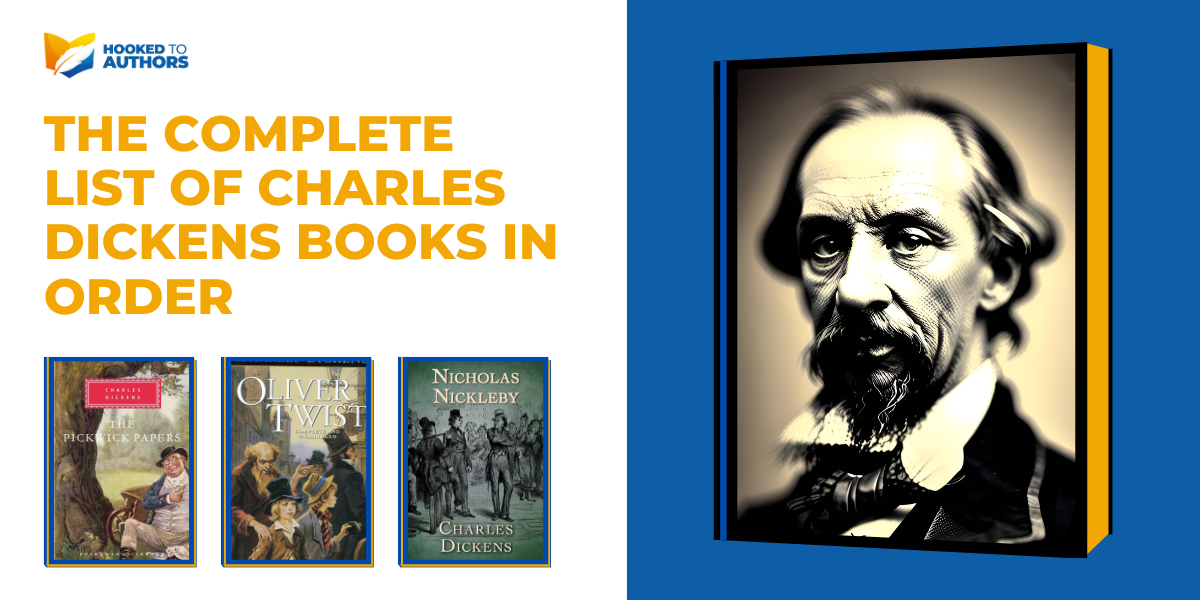One of the most celebrated authors of the Victorian era, Charles John Huffam Dickens (1812-1870), was an Englishman. Dickens was a prolific author who kept a weekly diary for twenty years.
Over the course of his career, he published 15 novels, five novellas, hundreds of short stories, and multiple non-fiction pieces. This earned him widespread acclaim and a large fanbase. His books are still read and discussed today.
He tirelessly advocated for children’s rights, education, and other social changes. Dickens also wrote extensively, gave numerous readings, and sent numerous letters to the authorities regarding the same.
The socioeconomic atmosphere of the time was reflected in his writing, and the term “Dickensian” is still used today to describe characteristics evocative of Dickens, such as humorously repulsive people or bad working conditions.
Table of Contents
- List of Charles Dickens Books
- 1. The Pickwick Papers – 1836
- 2. Oliver Twist – 1837
- 3. Nicholas Nickleby – 1838
- 4. The Old Curiosity Shop – 1840
- 5. Barnaby Rudge – 1841
- 6. Martin Chuzzlewit – 1843
- 7. A Christmas Carol – Novella – 1843
- 8. The Chimes – Novella – 1844
- 9. The Cricket on the Hearth – Novella – 1845
- 10. Dombey and Son – 1846
- 11. The Haunted Man – Novella – 1848
- 12. David Copperfield – 1849
- 13. Bleak House – 1852
- 14. Hard Times – 1854
- 15. Little Dorrit – 1855
- 16. A Tale of Two Cities – 1859
- 17. Great Expectations – 1860
- 18. Our Mutual Friend – 1864
- 19. The Mystery of Edwin Drood – 1870
- Summary
List of Charles Dickens Books
Let’s take a look at all of Charles Dickens’s novels and a few of his more notable novellas in order of publication.
| Sr. No. | Title | Publication Date | Print Length | Publisher | Where to Buy |
|---|---|---|---|---|---|
| 1 | The Pickwick Papers | March 2, 1999 | 976 pages | Everyman's Library | |
| 2 | Oliver Twist | September 13, 2016 | 600 pages | Macmillan Collector's Library | |
| 3 | Nicholas Nickleby | September 8, 2021 | 474 pages | Independently published | |
| 4 | The Old Curiosity Shop | January 5, 1998 | 608 pages | Wordsworth Editions Ltd | |
| 5 | Barnaby Rudge | September 8, 2021 | 465 pages | Independently published | |
| 6 | Martin Chuzzlewit | March 30, 1998 | 832 pages | Wordsworth Editions Ltd | |
| 7 | A Christmas Carol | October 8, 2014 | 144 pages | Penguin Classics | |
| 8 | The Chimes | December 30, 2007 | 120 pages | 1st World Library - Literary Society | |
| 9 | The Cricket on the Hearth | February 1, 2004 | 112 pages | Wildside Press | |
| 10 | Dombey and Son | December 5, 1999 | 848 pages | Wordsworth Editions |
1. The Pickwick Papers – 1836
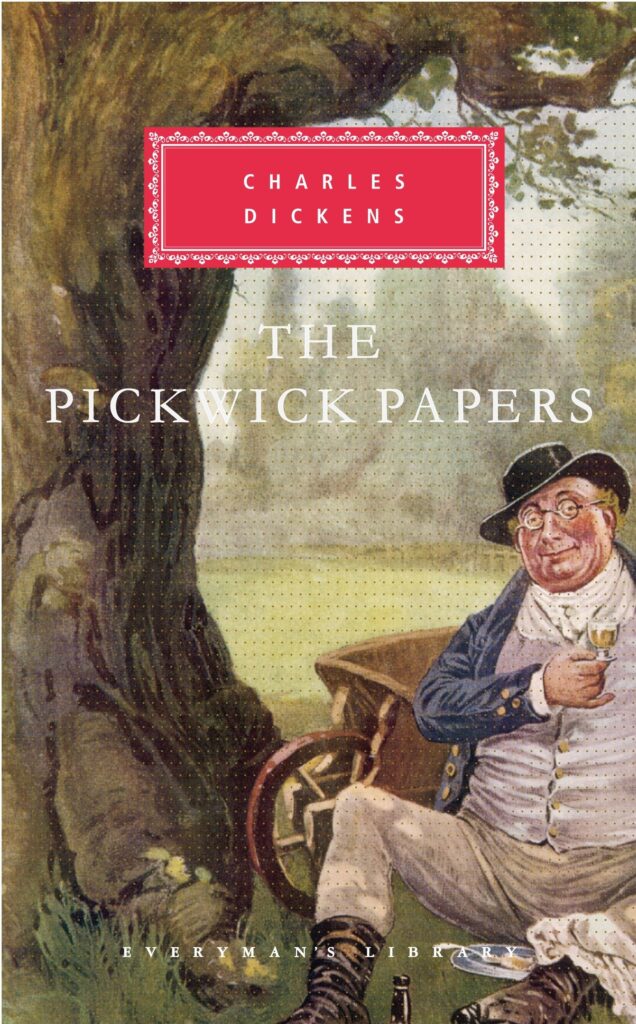
The Pickwick Papers, originally titled The Posthumous Writings of the Pickwick Club, was Charles Dickens’s first novel and is widely considered to be a humorous masterpiece. A group of English gentlemen, the Pickwick Club, embark on a series of misadventures throughout the country.
They encounter several memorable people along the journey, including Dickens’s most famous invention, the charming Sam Weller. Over the course of 20 months and 19 issues, it managed to make satire out of the dire circumstances in which modern Britain now finds itself.
Later, serialized stories with abrupt endings similar to The Pickwick Papers became a phenomenon.
2. Oliver Twist – 1837
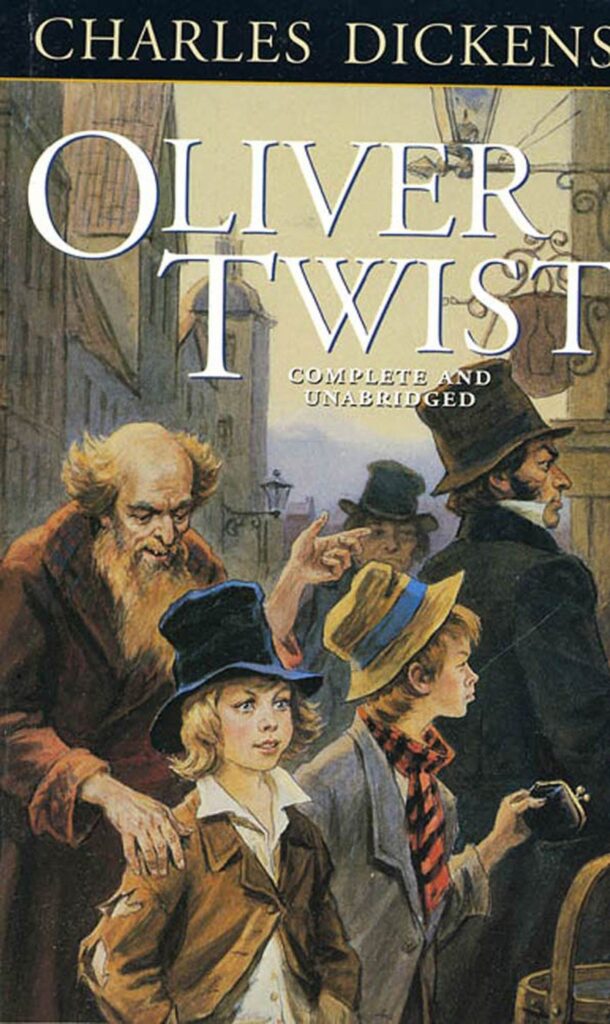
Oliver Twist, one of Charles Dickens’s most well-known works, was first published in 1838 under the title The Parish Boy’s Progress. It appeared in installments between 1837 and 1839.
Domestic abuse, child labor, kid recruitment into criminal organizations, and working-class living situations are all satirized by Dickens. The novel is a biting indictment of contemporary social and economic conditions and was instrumental in drawing attention to the misery of England’s impoverishment.
Fagin was named after Bob Fagin, an employee at the blacking (shoe polish) business where the young Charles Dickens worked. Other well-known characters from Oliver Twist are the Artful Dodger, Bill Sykes, Nancy, and Fagin.
3. Nicholas Nickleby – 1838

The 1838–1839 novel Nicholas Nickleby follows the protagonist as he tries to look for his mother and sister after their father dies. The protagonist is a young man who, after his father’s death, must go out on his own to find his place in the world.
He runs across a variety of sketchy folks along the road, and he is caught up in several escapades.
The tale delves into topics including capitalism, child labor, and schooling. Mrs. Nickleby’s perpetual confusion was inspired by Dickens’ mother.
4. The Old Curiosity Shop – 1840
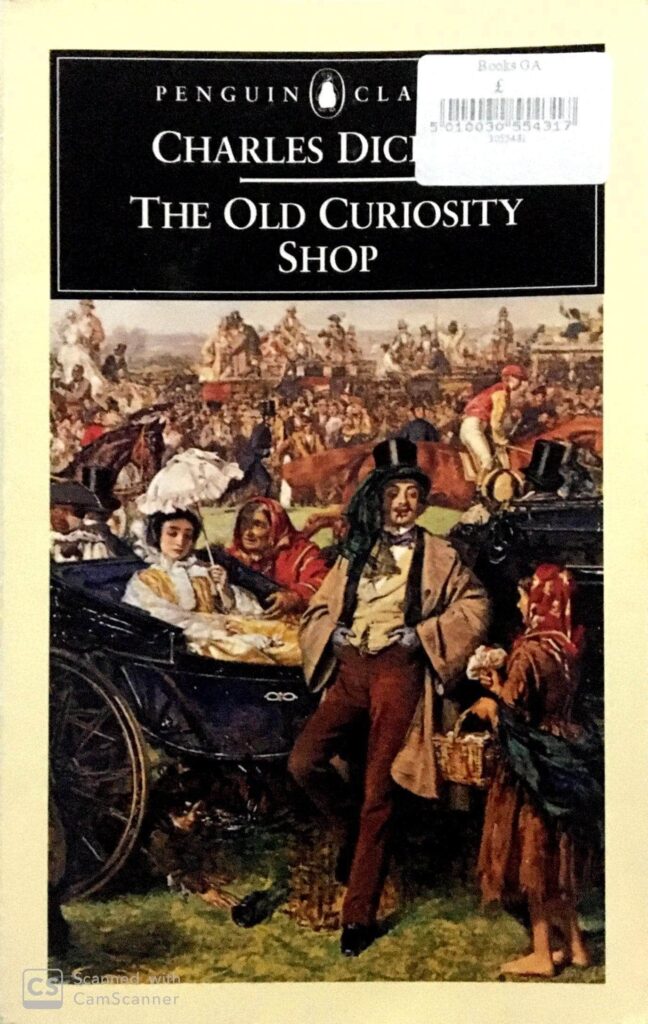
The Old Curiosity Shop chronicles the daily lives of Nell Trent and her grandpa. Both worked at The Old Curiosity Shop in London and were serialized in the periodical Master Humphrey’s Clock, to which Dickens regularly contributed, between 1840 and 1841. Writing about Little Nell’s death was extremely painful for Dickens because he felt for her as if she were his kid.
In 1841, when the final installment of Charles Dickens’s series arrived in New York, people rushed to the wharf to get their hands on the book. The story was read by Queen Victoria, who found it “very intriguing and cleverly written.”
5. Barnaby Rudge – 1841
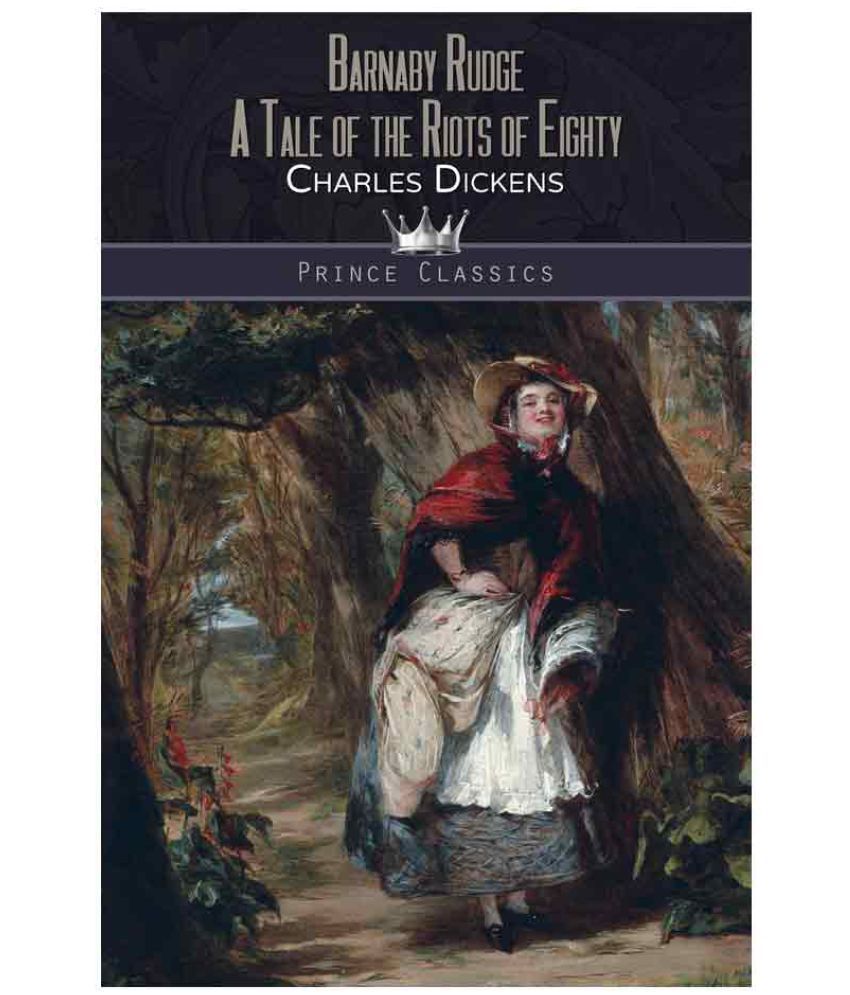
Barnaby Rudge: A Story of the Riots of Eighty (or just Barnaby Rudge) was also published in 1841 in Master Humphrey’s Clock, with The Old Curiosity Shop. It was supposed to be Dickens’ debut novel, but he ran into some trouble along the way.
The book is set during the anti-Catholic Gordon Riots of 1780 and follows the narrative of a naive young man named Barnaby Rudge who gets caught up in the violence.
It’s not often adapted into cinema or television because it’s one of Dickens’ less well-known works.
6. Martin Chuzzlewit – 1843
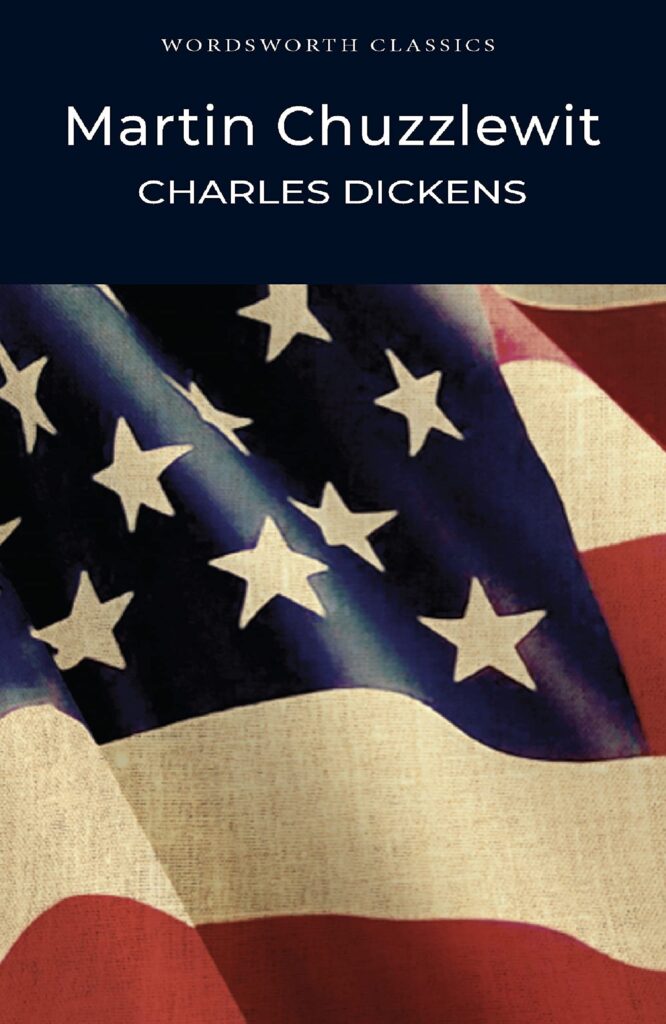
Martin Chuzzlewit was published in installments between 1843 and 1844 and was written by Dickens after his 1842 trip to America negatively impacted him. Dickens uses the Chuzzlewit family to illustrate several issues central to the story, including selfishness and greed.
Even though Dickens informed a friend during the writing process that he believed this to be his most accomplished work to date, sales of the book were disappointing. Later in life, Dickens admitted that the bad picture of America in his works was exaggerated for humorous purposes.
7. A Christmas Carol – Novella – 1843
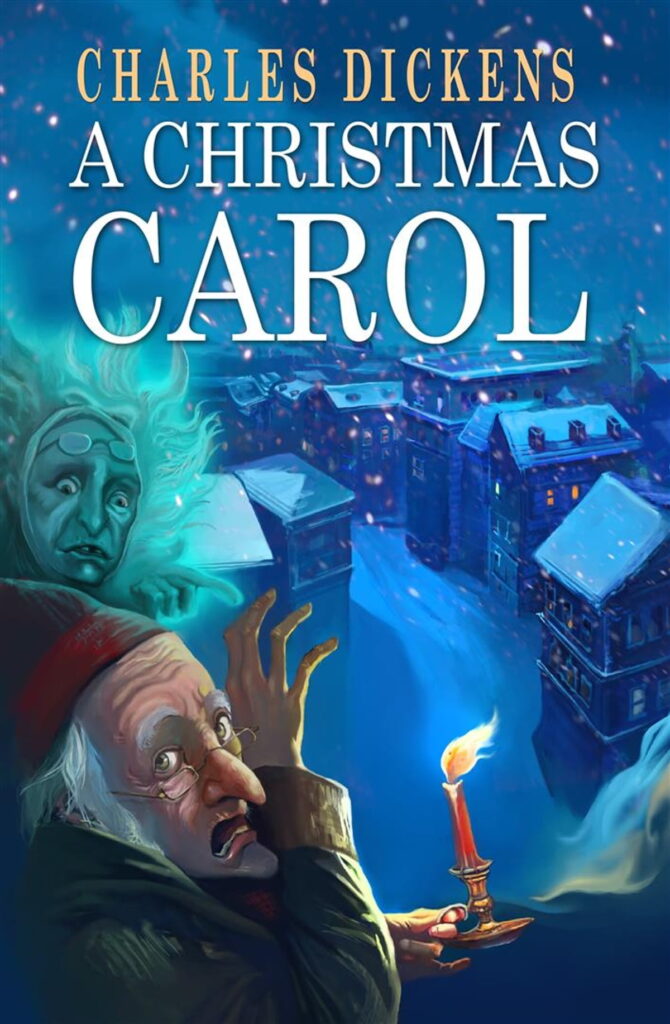
A Christmas Carol, one of Charles Dickens’s most famous works, relates the story of a jaded old miser named Ebenezer Scrooge and the visits he receives from the spirits of his deceased business partner Jacob Marley and Christmases Past, Present, and Yet to Come.
It was released on December 19, 1843, and had sold out by Christmas Eve; it is a novella about the evolution of Christmas customs and the importance of giving to others. From 1849 until he died in 1870, Dickens read this tale publicly roughly 130 times.
8. The Chimes – Novella – 1844
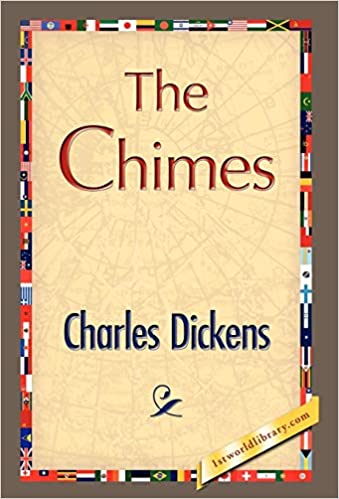
The Chimes, or A Goblin Tale of Some Bells that Rang an Old Year Out and a New Year Inn, was the second in Charles Dickens’ series of ‘Christmas novels,’ five novellas with strong moral and social overtones.
It was released a year after A Christmas Carol. The work was praised for its kind treatment of the impoverished and was written during the author’s year-long stay in Italy.
9. The Cricket on the Hearth – Novella – 1845
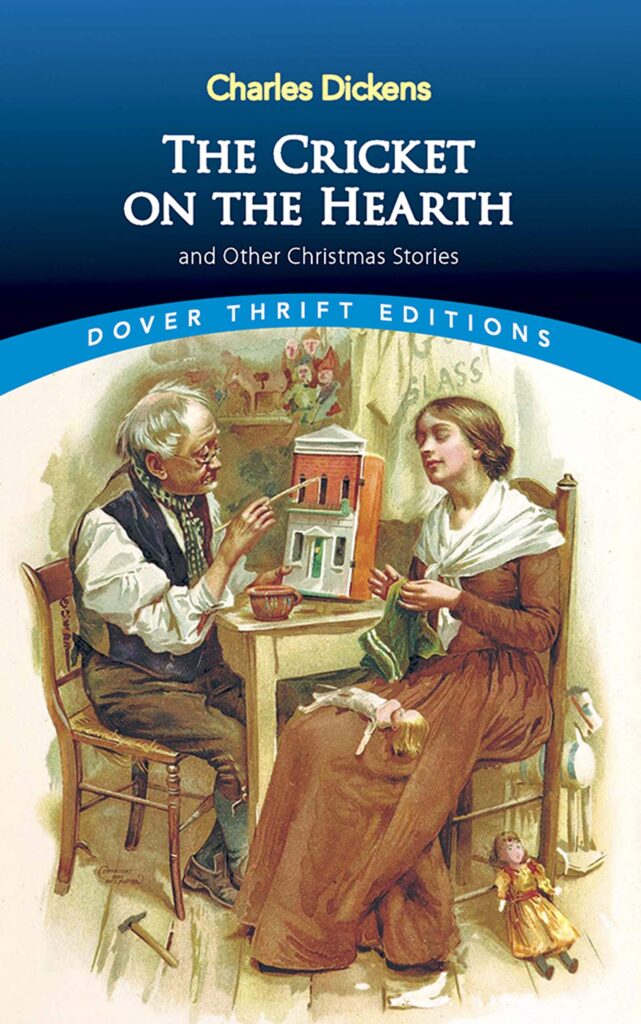
One of Dickens’ Christmas works is a novella titled The Cricket on the Hearth: A Fairy Tale of Home.
It was different from the others in that it didn’t try to convey any sort of heavy social or moral message, instead opting for a story about idyllic household life reminiscent of a fairy tale.
While some panned it for being too emotional and ignoring the social concerns of the day, others liked how it portrayed the ideal Victorian family.
10. Dombey and Son – 1846
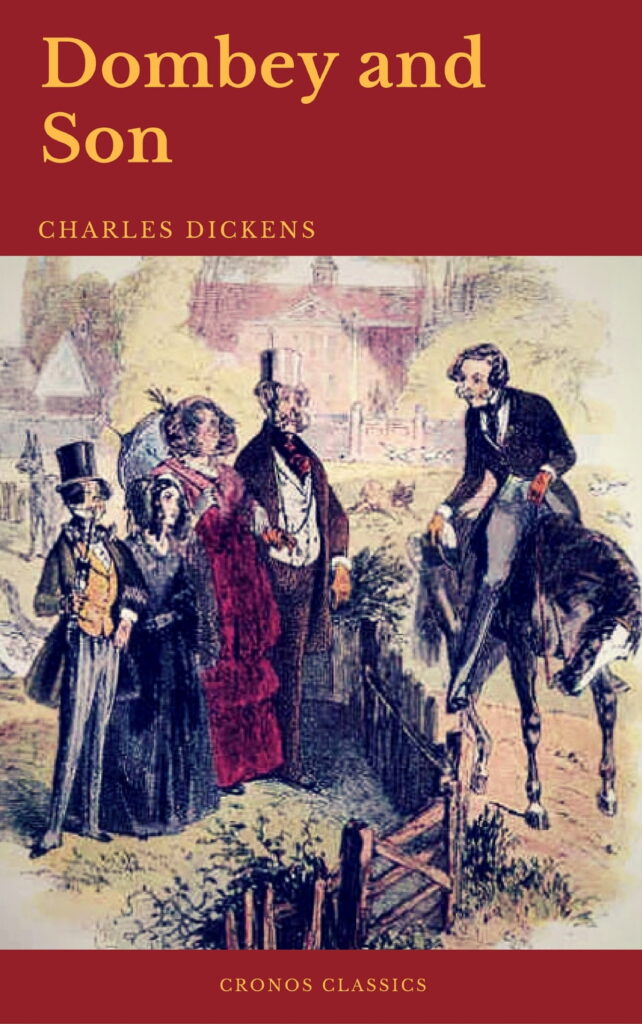
Dealings with the Firm of Dombey and Son: Wholesale, Retail, and for Exportation (also known as Dombey and Son) is a serial novel published between 1846 and 1848 that chronicles the fortunes of a shipping company owner who is disappointed by the absence of a son to inherit the business.
The head of a shipping company at first rejects his daughter’s affection, but they end up reconciling before he dies. There are a lot of Dickensian elements in the novel, such as the mistreatment of children, planned marriages, lies, and social stratification.
11. The Haunted Man – Novella – 1848

The Haunted Man, also known as The Haunted Man and the Ghost’s Bargain, A Fancy for Christmas-Time, is the fifth and last of Dickens’s Christmas novellas. “The Haunted Man” places less emphasis on the holiday of Christmas itself and instead focuses on the spirit of the season.
The story follows Professor Redlaw as he is haunted by a ghost and reflects on his past failures and regrets. Thus, the novel ultimately celebrates the themes of redemption and forgiveness associated with the holiday season.
12. David Copperfield – 1849
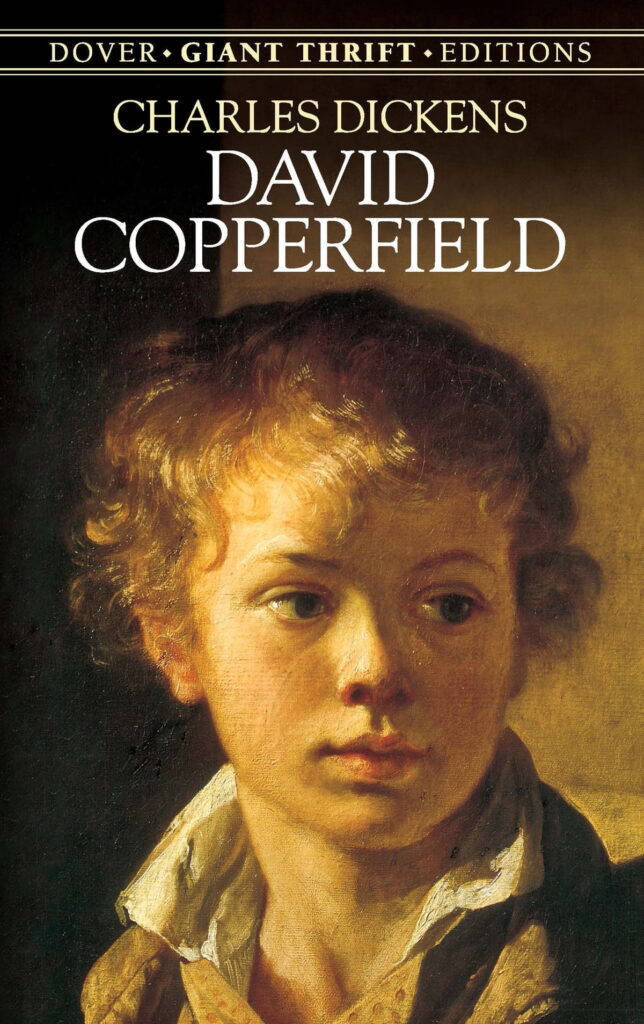
The Personal Biography, Adventures, Experience, and Observation of David Copperfield the Younger of Blunderstone Rookery (Which He Never Intended to Publish on Any Account) was Dickens’ eighth novel.
It was initially published as a serial between 1849 and 1850. In the foreword to the 1867 edition, Dickens explains why this autobiographical story is his favorite: “Like many affectionate parents, I have in my heart of hearts a favorite child. He goes by the name “David Copperfield.”
13. Bleak House – 1852
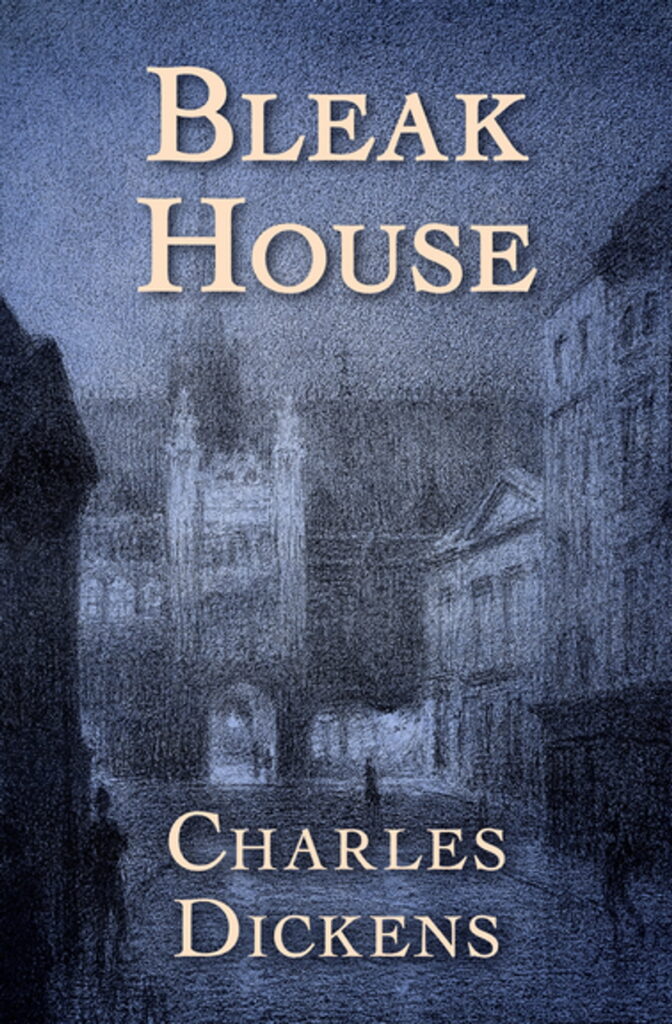
Bleak House, another classic by Charles Dickens, was serialized between 1852 and 1853. The protagonist Esther Summerson and an omniscient narrator tell the story of a protracted judicial battle that arises when a deceased individual leaves behind multiple, incompatible wills.
However, the character who dies of spontaneous combustion is probably unique to this piece of classic literature. It’s always been considered one of the top novels of all time.
14. Hard Times – 1854
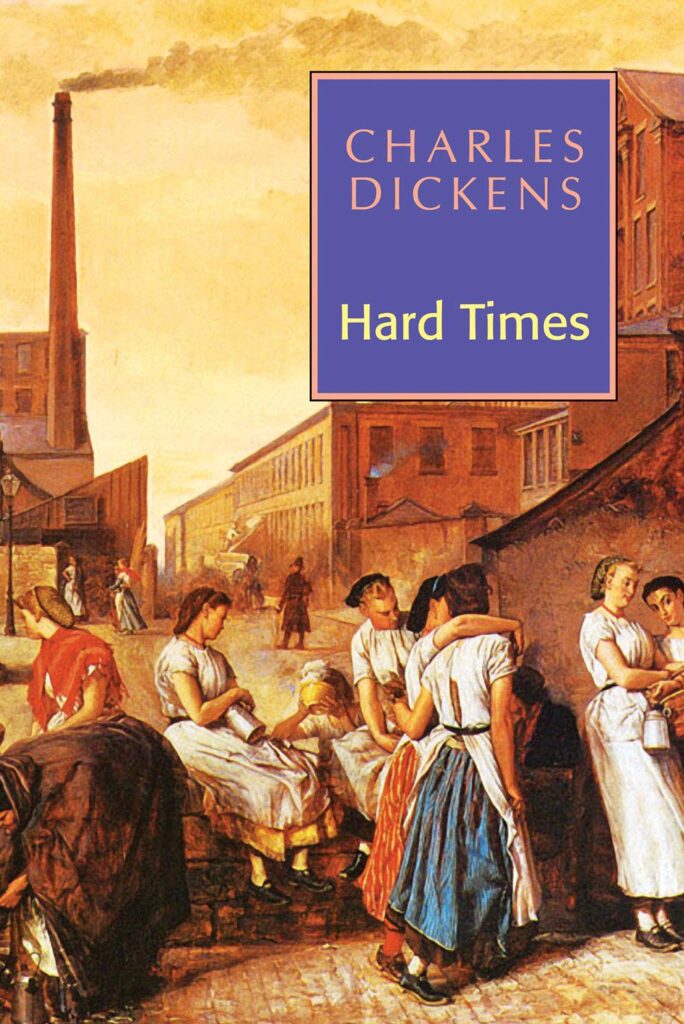
Hard Times was serialized in Dickens’ weekly magazine Household Words beginning in 1854. The social and economic realities in England are dispassionately examined in this work that offers a utilitarian point of view.
A mere fraction of the length of some of Dickens’ other works, this one is also devoid of a preface, pictures, and London-based sections. Readers and critics alike agree that this novel is very different from Dickens’ other works.
15. Little Dorrit – 1855
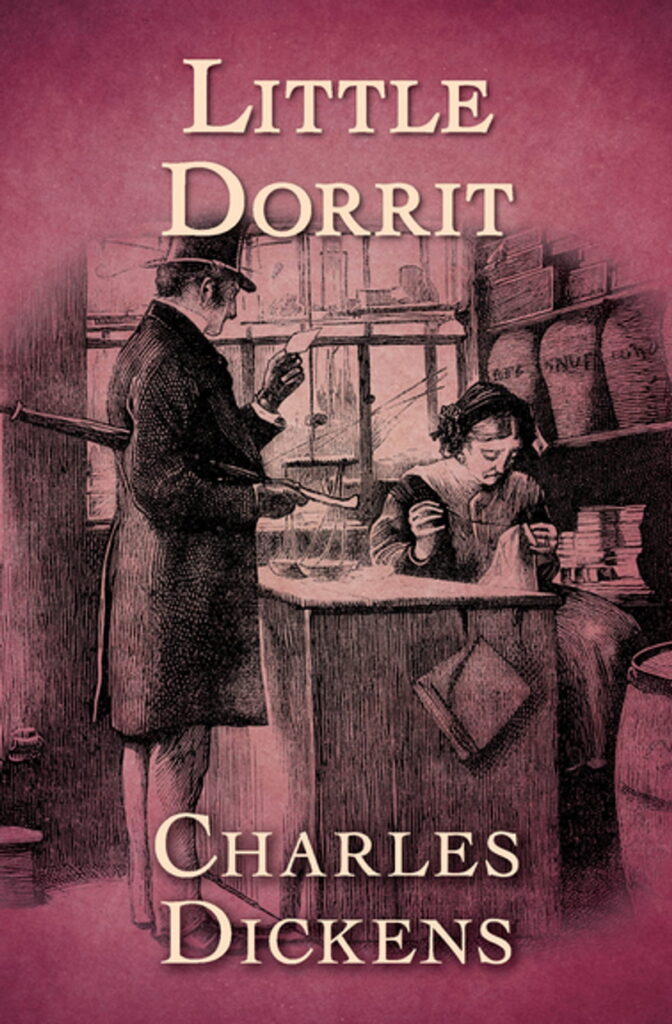
Young Amy Dorrit, who was born and reared in London’s Marshalsea jail for debtors, is the protagonist of Little Dorrit, a serial novel published between 1855 and 1857. When Dickens was a child, his father spent three months in Marshalsea jail, a fact that received less attention at the time.
At debtors’ prisons, those who were unable to work were imprisoned but could only be released by paying their debts; the novel criticizes the government, society, and this institution. Known composer Tchaikovsky was reportedly enthralled by the novel.
16. A Tale of Two Cities – 1859
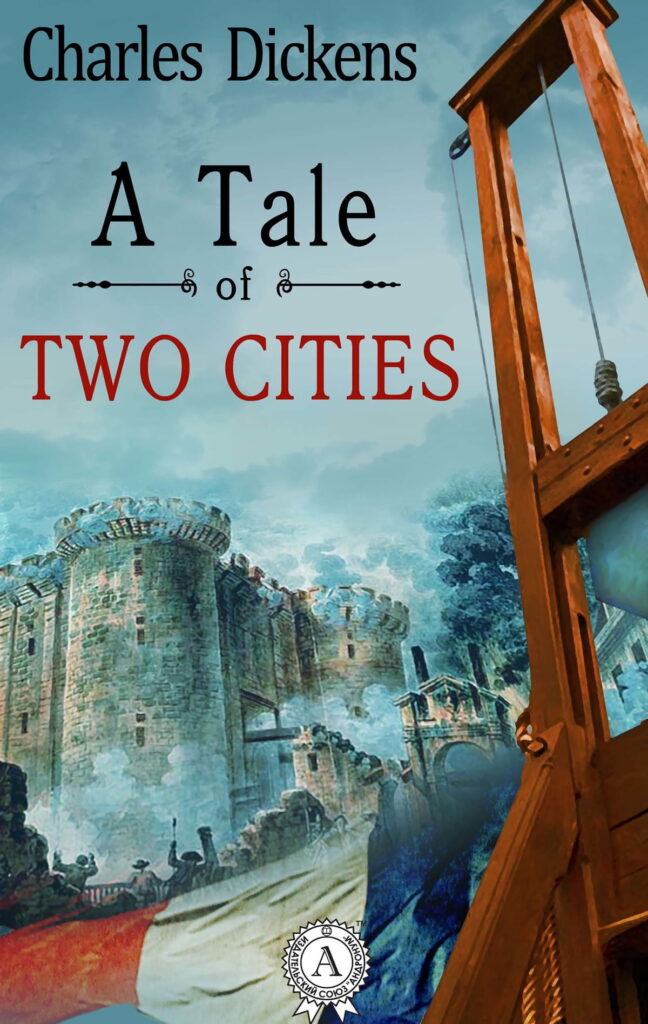
Charles Dickens’s classic A Tale of Two Cities is set in France during the Revolution. The novel follows the lives of French aristocrat Charles Darnay and alcoholic lawyer Sydney Carton as their paths cross during the revolutionary period.
The novel compares and contrasts Paris and London during this turbulent era, and it deals with themes of sacrifice, love, and redemption. This novel is often regarded as one of Dickens’ best.
17. Great Expectations – 1860
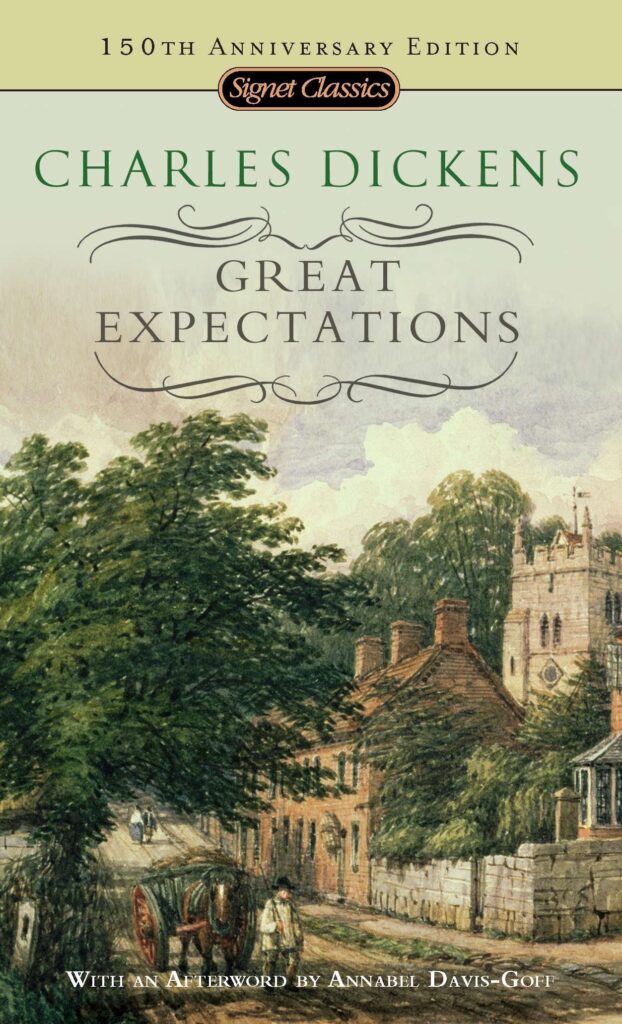
One of Dickens’ most well-known characters, the eccentric Miss Havisham, first appeared in All the Year Round between 1860 and 1861 under the title Great Expectations. Pip, who is introduced as a poor youngster, rises in status and money as the story progresses.
Yet, he discovers that success in the material world is not everything in life. In this piece, the iconic moment when Miss Havisham perishes in a fire is shown. The book generated a lot of buzzes when it was first published, and now it frequently appears on lists of the best books ever written.
18. Our Mutual Friend – 1864
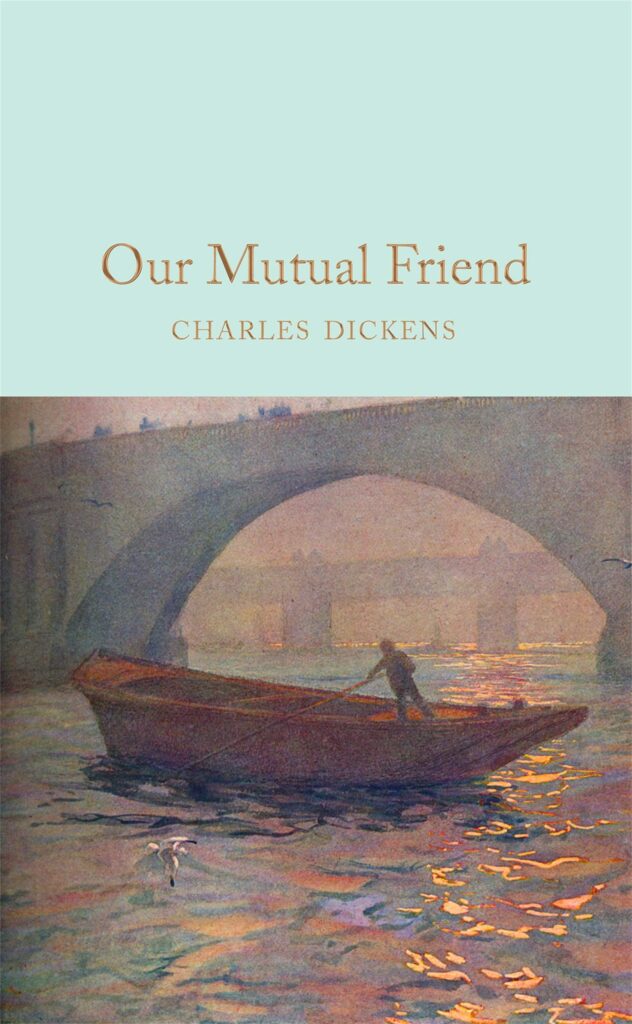
One of Dickens’ most accomplished works, Our Mutual Friend, is also the author’s final novel. It combines sharp satire with societal insight. This tale takes a look at Victorian London’s trash piles and compares them to the pristine mansions of the wealthy.
The work is a critique of the harm caused by materialism, and it does so via a variety of people and situations. Observers have speculated that Dickens was only experimenting with structure when they note the novel’s unconventional layout.
19. The Mystery of Edwin Drood – 1870
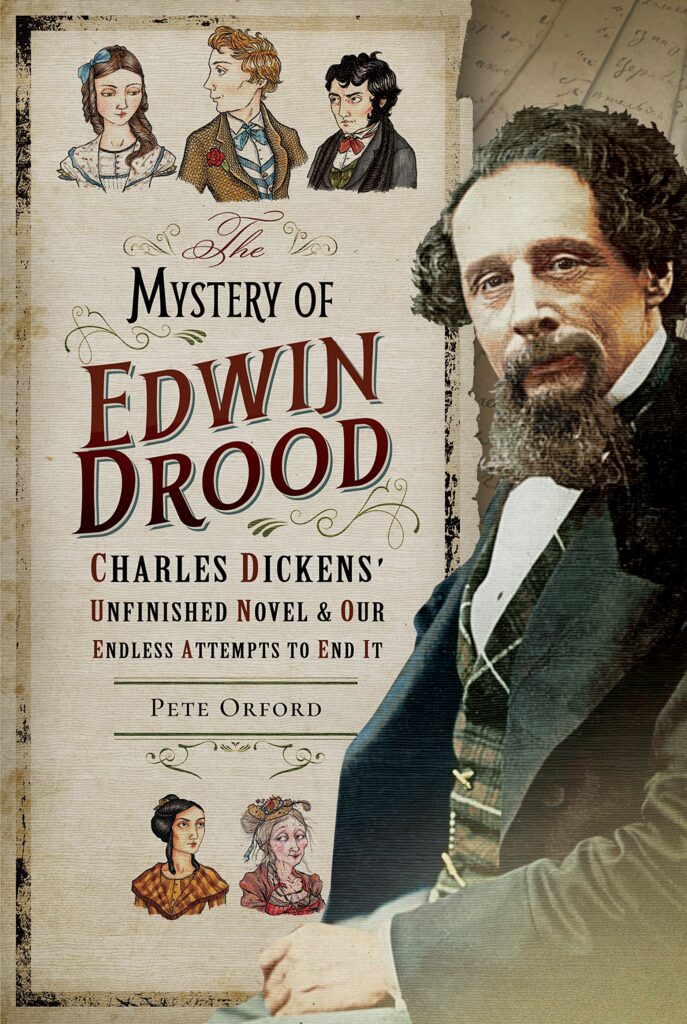
Dickens was barely halfway through his sixteenth novel, The Mystery of Edwin Drood, when he passed away.
It completes the canonical set of Charles Dickens’s works. Dickens modeled Cloisterham on Rochester for this story, and it centers on the disappearance of a man named Edwin Drood.
When Dickens passed away in 1870, just six of the original twelve installments had been completed, and the mystery had not been solved. There have been several attempts to continue or modify the narrative since then.
Summary
There will always be a place in literature for Charles Dickens’ works. His works, which have intricate storylines and resonant themes and characters, have a wide appeal. Anyone who is interested in reading all of Charles Dickens’s works may find this list to be an invaluable tool.
By arranging his writings in chronological order, readers can see how his writing style and the topics he explored developed over time. This whole list is a must-read for every literary lover, whether you are a lifelong admirer or a beginner to Dickens’ writings.

